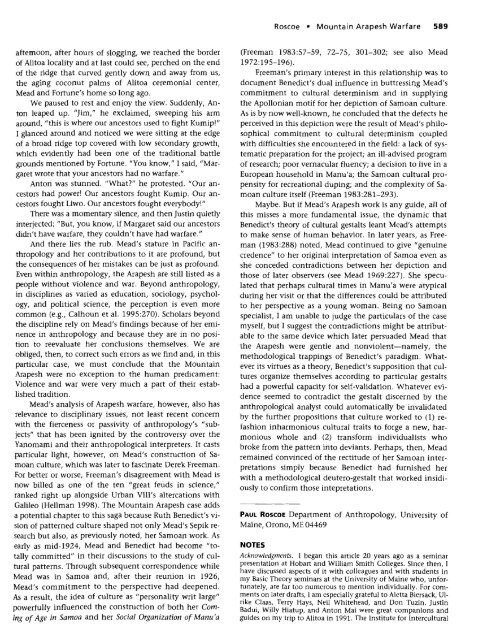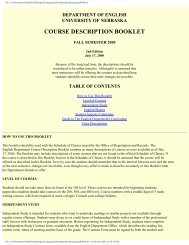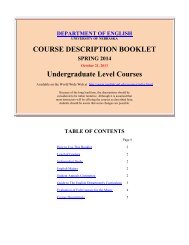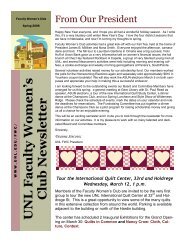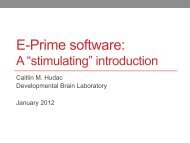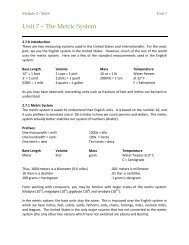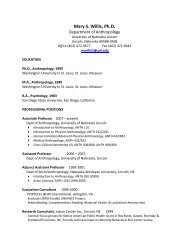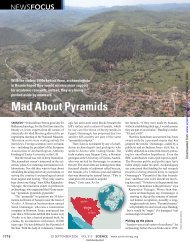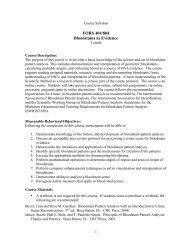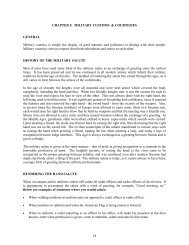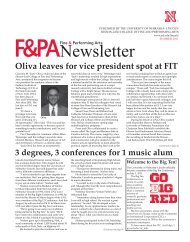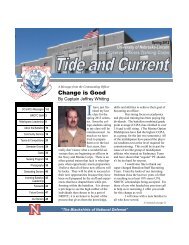Margaret Mead, Reo Fortune, and Mountain Arapesh Warfare
Margaret Mead, Reo Fortune, and Mountain Arapesh Warfare
Margaret Mead, Reo Fortune, and Mountain Arapesh Warfare
You also want an ePaper? Increase the reach of your titles
YUMPU automatically turns print PDFs into web optimized ePapers that Google loves.
afternoon, after hours of slogging, we reached the border<br />
of Alitoa locality <strong>and</strong> at last could see, perched on the end<br />
of the ridge that curved gently down <strong>and</strong> away from us,<br />
the aging coconut palms of Alitoa ceremonial center,<br />
<strong>Mead</strong> <strong>and</strong> <strong>Fortune</strong>'s home so long ago.<br />
We paused to rest <strong>and</strong> enjoy the view. Suddenly, Anton<br />
leaped up. "Jim," he exclaimed, sweeping his arm<br />
around, "this is where our ancestors used to fight Kumip!"<br />
I glanced around <strong>and</strong> noticed we were sitting at the edge<br />
of a broad ridge top covered with low secondary growth,<br />
which evidently had been one of the traditional battle<br />
grounds mentioned by <strong>Fortune</strong>. "You know," I said, "<strong>Margaret</strong><br />
wrote that your ancestors had no warfare."<br />
Anton was stunned. "What?" he protested. "Our ancestors<br />
had power! Our ancestors fought Kumip. Our ancestors<br />
fought Liwo. Our ancestors fought everybody!"<br />
There was a momentary silence, <strong>and</strong> then Justin quietly<br />
interjected; "But, you know, if <strong>Margaret</strong> said our ancestors<br />
didn't have warfare, they couldn't have had warfare."<br />
And there lies the rub. <strong>Mead</strong>'s stature in Pacific anthropology<br />
<strong>and</strong> her contributions to it are profound, but<br />
the consequences of her mistakes can be just as profound.<br />
Even within anthropology, the <strong>Arapesh</strong> are still listed as a<br />
people without violence <strong>and</strong> war. Beyond anthropology,<br />
in disciplines as varied as education, sociology, psychology,<br />
<strong>and</strong> political science, the perception is even more<br />
common (e.g., Calhoun et al. 1995:270). Scholars beyond<br />
the discipline rely on <strong>Mead</strong>'s findings because of her eminence<br />
in anthropology <strong>and</strong> because they are in no position<br />
to reevaluate her conclusions themselves. We are<br />
obliged, then, to correct such errors as we find <strong>and</strong>, in this<br />
particular case, we must conclude that the <strong>Mountain</strong><br />
<strong>Arapesh</strong> were no exception to the human predicament:<br />
Violence <strong>and</strong> war were very much a part of their established<br />
tradition.<br />
<strong>Mead</strong>'s analysis of <strong>Arapesh</strong> warfare, however, also has<br />
relevance to disciplinary issues, not least recent concern<br />
with the fierceness or passivity of anthropology's "subjects"<br />
that has been ignited by the controversy over the<br />
Yanomami <strong>and</strong> their anthropological interpreters. It casts<br />
particular light, however, on <strong>Mead</strong>'s construction of Samoan<br />
culture, which was later to fascinate Derek Freeman.<br />
For better or worse, Freeman's disagreement with <strong>Mead</strong> is<br />
now billed as one of the ten "great feuds in science,"<br />
ranked right up alongside Urban VIII's altercations with<br />
Galileo (Hellman 1998). The <strong>Mountain</strong> <strong>Arapesh</strong> case adds<br />
a potential chapter to this saga because Ruth Benedict's vision<br />
of patterned culture shaped not only <strong>Mead</strong>'s Sepik research<br />
but also, as previously noted, her Samoan work. As<br />
early as mid-1924, <strong>Mead</strong> <strong>and</strong> Benedict had become "totally<br />
committed" in their discussions to the study of cultural<br />
patterns. Through subsequent correspondence while<br />
<strong>Mead</strong> was in Samoa <strong>and</strong>, after their reunion in 1926,<br />
<strong>Mead</strong>'s commitment to the perspective had deepened.<br />
As a result, the idea of culture as "personality writ large"<br />
powerfully influenced the construction of both her Coming<br />
of Age in Samoa <strong>and</strong> her Social Organization of Manu'a<br />
Roscoe • <strong>Mountain</strong> <strong>Arapesh</strong> <strong>Warfare</strong> 589<br />
(Freeman 1983:57-59, 72-75, 301-302; see also <strong>Mead</strong><br />
1972:195-196).<br />
Freeman's primary interest in this relationship was to<br />
document Benedict's dual influence in buttressing <strong>Mead</strong>'s<br />
commitment to cultural determinism <strong>and</strong> in supplying<br />
the Apollonian motif for her depiction of Samoan culture.<br />
As is by now well-known, he concluded that the defects he<br />
perceived in this depiction were the result of <strong>Mead</strong>'s philosophical<br />
commitment to cultural determinism coupled<br />
with difficulties she encountered in the field: a lack of systematic<br />
preparation for the project; an ill-advised program<br />
of research; poor vernacular fluency; a decision to live in a<br />
European household in Manu'a; the Samoan cultural propensity<br />
for recreational duping; <strong>and</strong> the complexity of Samoan<br />
culture itself (Freeman 1983:281-293).<br />
Maybe. But if <strong>Mead</strong>'s <strong>Arapesh</strong> work is any guide, all of<br />
this misses a more fundamental issue, the dynamic that<br />
Benedict's theory of cultural gestalts leant <strong>Mead</strong>'s attempts<br />
to make sense of human behavior. In later years, as Freeman<br />
(1983:288) noted, <strong>Mead</strong> continued to give "genuine<br />
credence" to her original interpretation of Samoa even as<br />
she conceded contradictions between her depiction <strong>and</strong><br />
those of later observers (see <strong>Mead</strong> 1969:227). She speculated<br />
that perhaps cultural times in Manu'a were atypical<br />
during her visit or that the differences could be attributed<br />
to her perspective as a young woman. Being no Samoan<br />
specialist, I am unable to judge the particulars of the case<br />
myself, but I suggest the contradictions might be attributable<br />
to the same device which later persuaded <strong>Mead</strong> that<br />
the <strong>Arapesh</strong> were gentle <strong>and</strong> nonviolent—namely, the<br />
methodological trappings of Benedict's paradigm. Whatever<br />
its virtues as a theory, Benedict's supposition that cultures<br />
organize themselves according to particular gestalts<br />
had a powerful capacity foi self-validation. Whatever evidence<br />
seemed to contradict the gestalt discerned by the<br />
anthropological analyst could automatically be invalidated<br />
by the further propositions that culture worked to (1) refashion<br />
inharmonious cultural traits to forge a new, harmonious<br />
whole <strong>and</strong> (2) transform individualists who<br />
broke from the pattern into deviants. Perhaps, then, <strong>Mead</strong><br />
remained convinced of the rectitude of her Samoan interpretations<br />
simply because Benedict had furnished her<br />
with a methodological deutero-gestalt that worked insidiously<br />
to confirm those intepretations.<br />
PAUL ROSCOE Department of Anthropology, University of<br />
Maine, Orono, ME 04469<br />
NOTES<br />
Acknowledgments. I began this article 20 years ago as a seminar<br />
presentation at Hobart <strong>and</strong> William Smith Colleges. Since then, I<br />
have discussed aspects of it with colleagues <strong>and</strong> with students in<br />
my Basic Theory seminars at the University of Maine who, unfortunately,<br />
are far too numerous to mention individually. For comments<br />
on later drafts, 1 am especially grateful to Aletta Biersack, Ulrike<br />
Claas, Terry Hays, Neil Whitehead, <strong>and</strong> Don Tuzin. Justin<br />
Badui, Willy Hiatup, <strong>and</strong> Anton Mai were great companions <strong>and</strong><br />
guides on my trip to Alitoa in 1991. The Institute for Intercultural


